
|
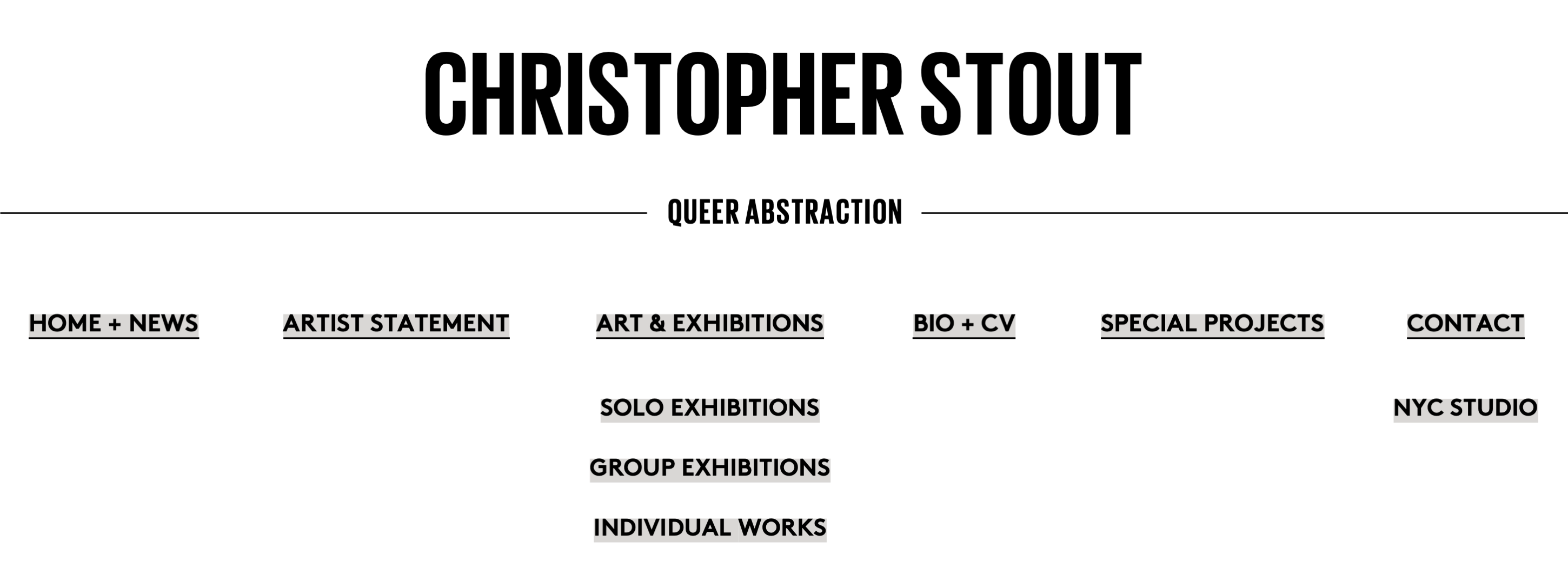
|
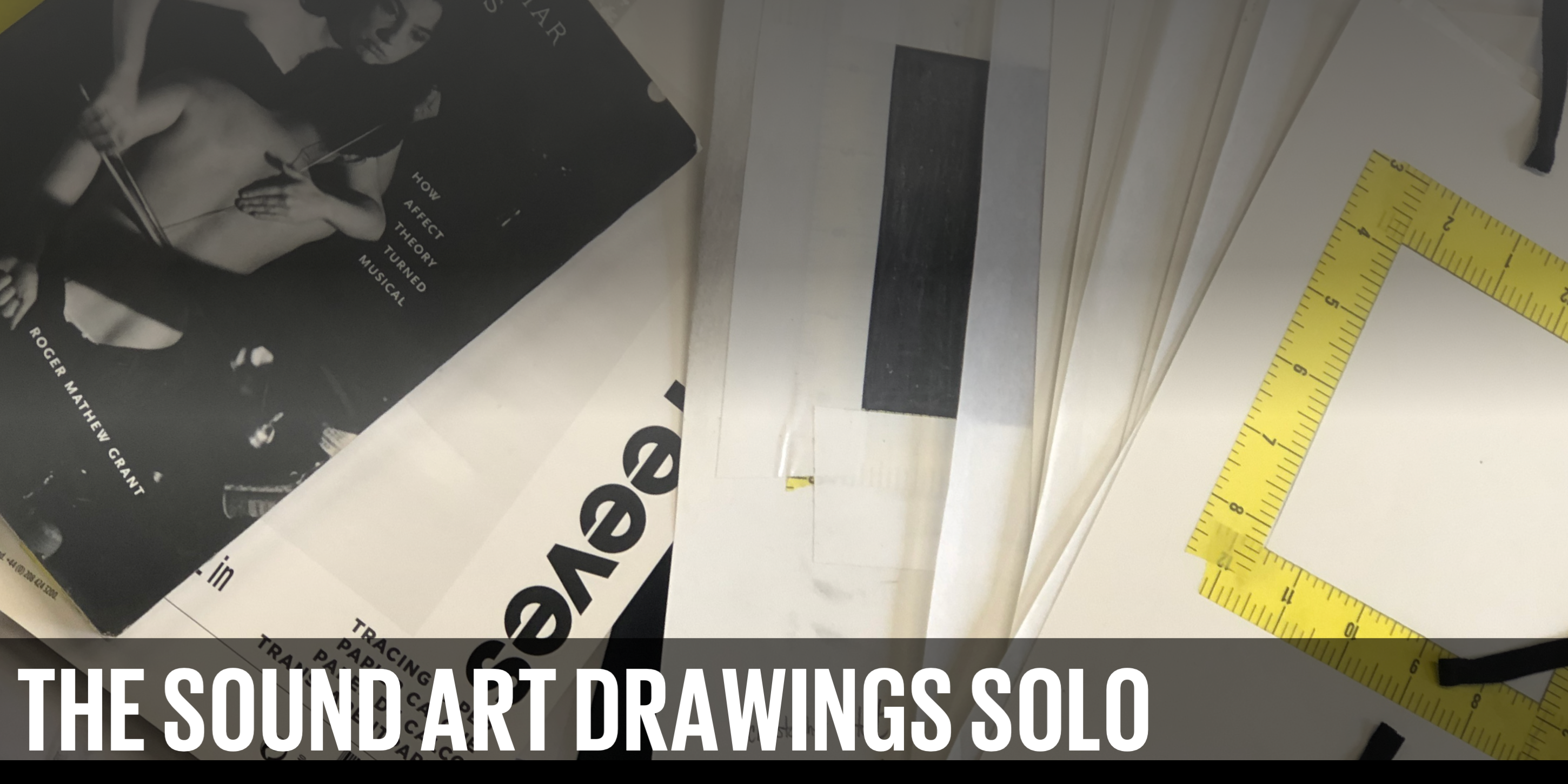 |
Caption: A worktable studio composition showing The Sound Art Drawings in progress. The book in this image is "Peculiar Attunements" written by my friend Roger Mathew Grant and published by Fordham University Press in 2020. This book served as a key influence in embarking upon this series of work. |
|
THE SOUND ART DRAWINGS SOLO Artfare is pleased to present The Sound Art Drawings, a solo by queer abstract reductivist painter Christopher Stout (pronouns: he/him/they). Stout describes queer abstraction as, "activist work about the queer experience that does not employ representation of the human figure and surrounds us with the notions of radical joy and a vision of queerness as found in our imaginations." Each of these new drawings is premised upon a musical piece written by a queer experimental composer. Here is an exhibition statement in the artists own words, "Thank you for letting me share my work with you. I want to begin with an acknowledgement of Roger Mathew Grant, whose book, “Peculiar Attunements” has been beautifully essential in the ideation of this project. https://www.fordhampress.com/9780823287741/peculiar-attunements/ I am pleased to share a series of 11 new monochrome drawings titled, The Sound Art Drawings. In a manner of speaking, these monochrome drawings formally highlight a long-standing working method of listening to sound art by queer composers in my studio. I enjoy an extensive library of sound art from queer composers, spanning from the late 1960’s through new genre music being composed present-day. Conceptually, I find queer sound art and queer abstraction to possess many congruencies. For each drawing, I continuously listened to a cherished piece of sound art written by a queer composer whose work I consider mentorial and a seminal member of the genre. During the listening session, I drew a monochrome formed by the music. We could refer to these monochromes as conversations or mediations, and they allow me to better articulate my practice in queer abstraction. |
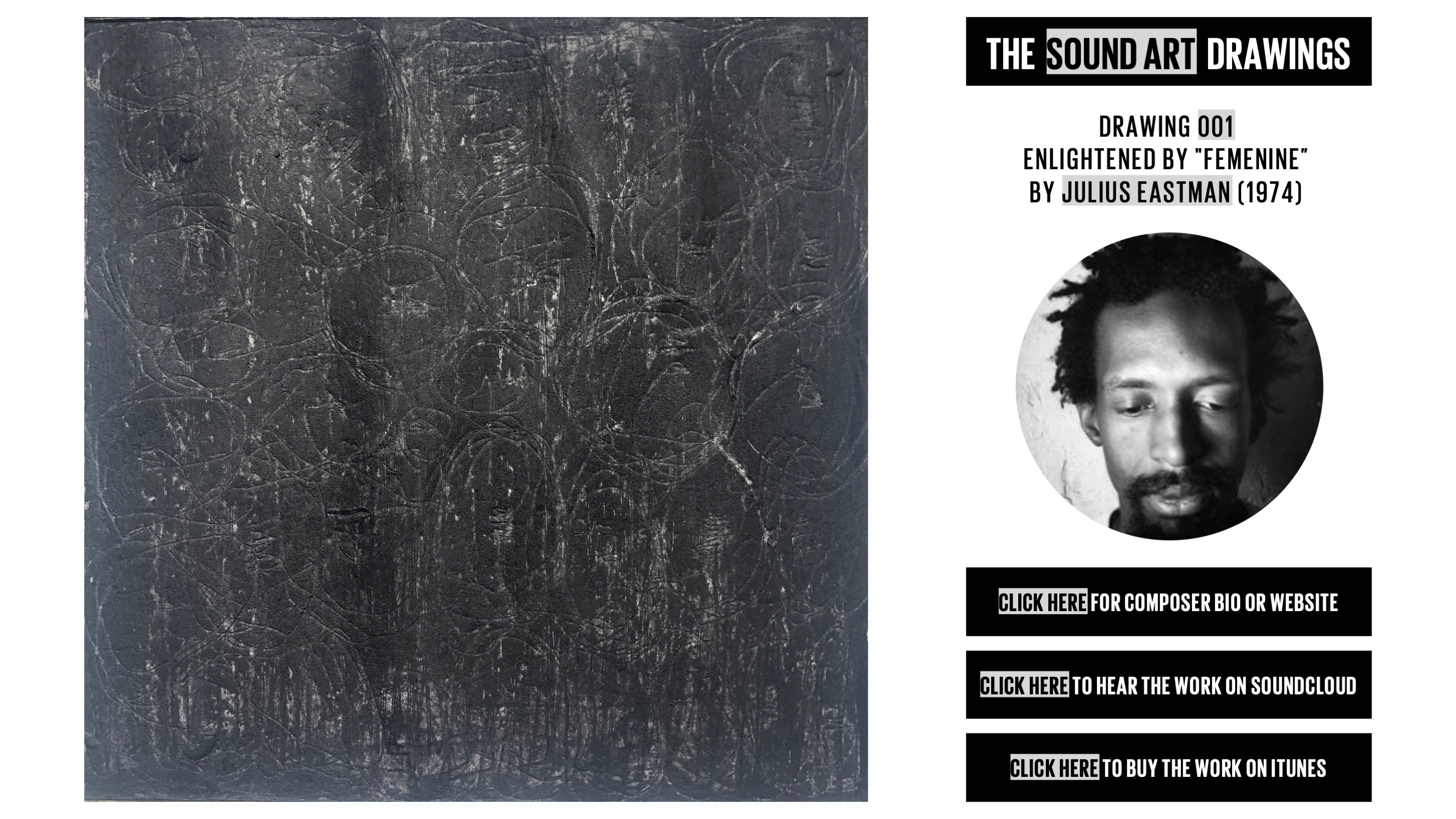
|
The Sound Art Drawings is a new series of monochrome drawings, wherein to achieve each individual drawing, I listened to a loop from a selected piece of music by a queer experimental composer. |

|
The Sound Art Drawings is a new series of monochrome drawings, whereby to achieve each individual drawing, I listened to a loop from a selected piece of music by a queer experimental composer. |

|
The Sound Art Drawings is a new series of monochrome drawings, whereby to achieve each individual drawing, I listened to a loop from a selected piece of music by a queer experimental composer. Drawing 003 from this series is based on the piece, “Underground,” written by PussyVision in 2018. While the first two drawings in this series reference composers whose work marks the origins of experimental sound art, this drawing stems from a noise artist making work in the here and now… here is a quote from their bio, “PussyVision is a genderqueer witch house producer, performance artist, and noise musician based out of Western Mass. who uses harsh electronics, heavy beats, and haunted vocals to evoke brutally honest and unsettlingly violent images of trauma, resilience and revenge. PussyVision builds dynamic tracks live on stage using analog synths, a MPC 1000, and loop pedals. Her vocals erratically oscillate between ethereal singing, blood-curdling screams, childlike chanting, and guttural howls with lyrics that speak intimately to anxiety, dissociation, violent fantasies, and the sweetness in regaining power post-trauma.” When I feel creative block in my studio, sometimes I push the furniture to the wall and put on Pussyvision’s album Replicate:// and lie on the floor and make little movement pieces with my body until the feeling passes. I specifically respond to this track from the album, and how at the midpoint the piece abruptly becomes something else. If you look at my work, it is literally a choppy drawing rendered on top of a smooth one. I would invite you to consider listening to their work with your eyes closed and your limbs fluid while examining your own reconciliation with a feeling of sweetness, found from regaining your power post-trauma. |
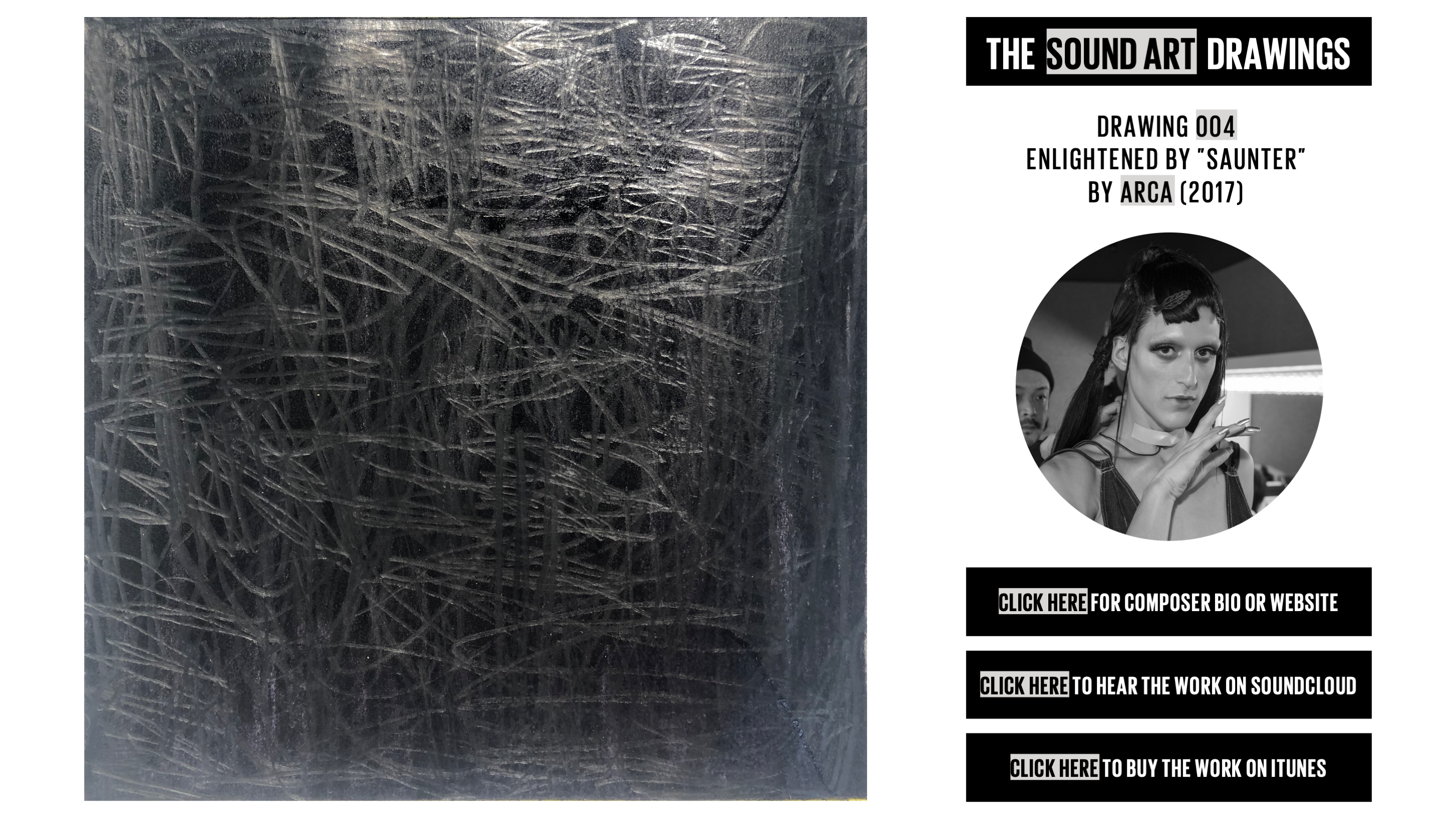
|
| The Sound Art Drawings is a new series of monochrome drawings, whereby to achieve each individual drawing, I listened to a loop from a selected piece of music by a queer experimental composer. Drawing 004 from this series is based on the piece, “Saunter,” written by Arca from her eponymously named album in 2017. Arca is an artist who has been revered and avidly followed by both the contemporary art and fashion macrocosms before and during her transition. And also, Arca is an artist who has been revered and avidly followed by both the contemporary art and fashion macrocosms as her work has become in some sense a euphoric monument reflecting her transition. Sometimes I find it easier to talk about what an artist’s work represents to me if some time has passed, because I’ve had the ability to digest it a bit. I find a heavy comfort in Arca’s work; however, I want to contain my comments to express that she is an essential part of this series, and here is something that she recently said that I find curious, “What I’m thinking about right now is what standing out means and what wanting to feel invisible means, because we all almost need that at certain points. Both of them are existential crises—if you blend in too much, what makes you different from anyone else? Is my individual spirit real? And if you stand out too much, you’re too much of a freak, so you’ll never belong.” |
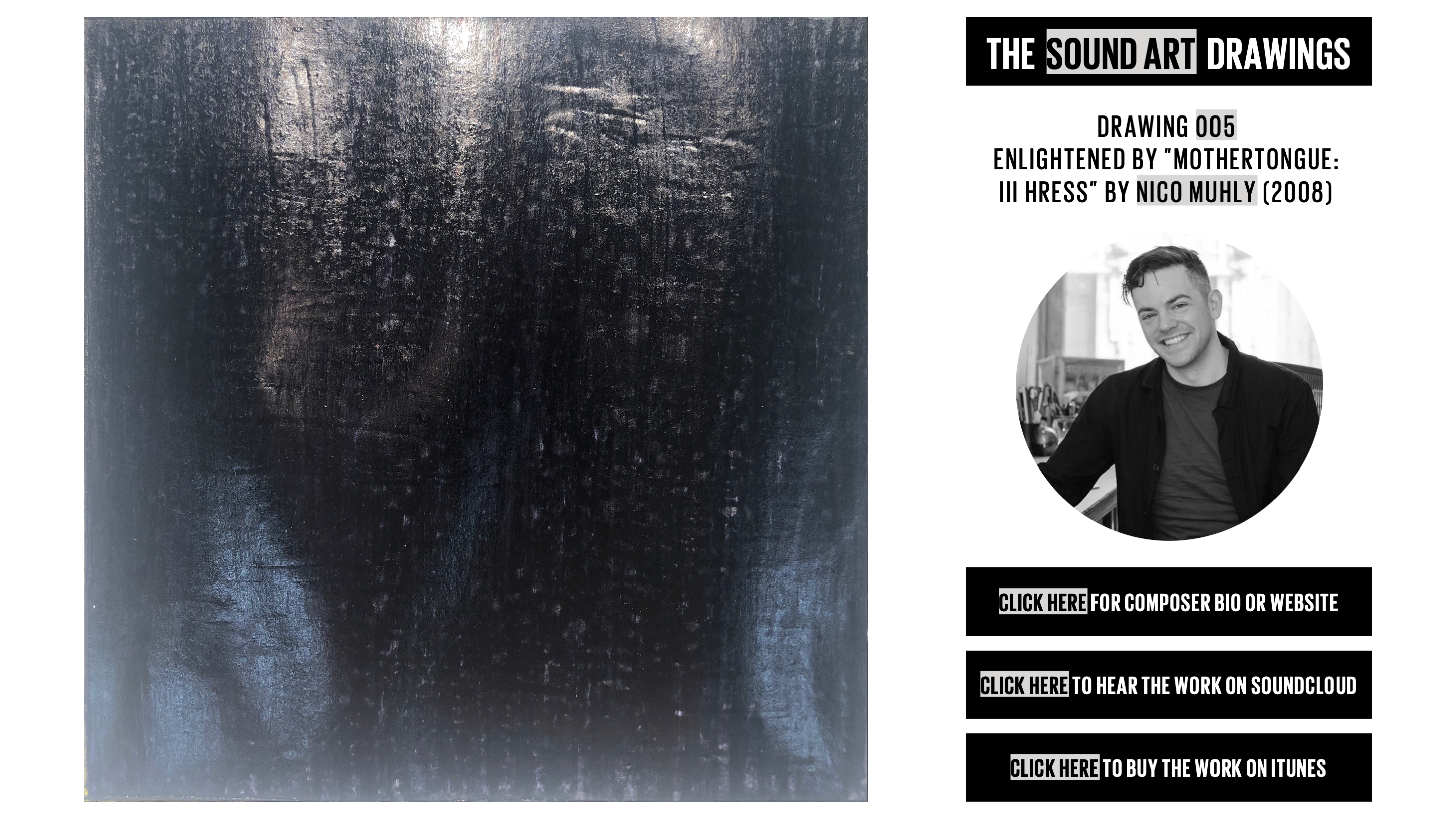
|
The Sound Art Drawings is a new series of monochrome drawings, whereby to achieve each individual drawing, I listened to a loop from a selected piece of music by a queer experimental composer. Drawing 005 from this series is based on the piece, “Mothertongue: III. Hress,” written by Nico Muhly album in 2008. |

|
The Sound Art Drawings is a new series of monochrome drawings, whereby to achieve each individual drawing, I listened to a loop from a selected piece of music by a queer experimental composer. Drawing 006 from this series is based on the piece, “Noises I Make Without Using my Vocal Cords,” written by Natalie Braginsky in 2015. I would like to share about an article published in May 2018 in VAN Magazine, which highlights both Natalie Braginsky and this piece of sound art: “Another more abstract approach to the complicated and messy feelings that many trans people have about voices is simply to avoid using them—thus the title of Natalie Braginsky’s 'noises i made without using my vocal cords' (2015). When Braginsky transitioned, she abruptly shifted from writing instrumental music to working primarily with electronics. She attributes her use of abrasive noise to the anger she felt at the time—a common feeling among trans people confronted with a world that’s not built with us in mind. Beyond that, the title suggests that these sounds are meant to take the place of the human voice—still a kind of personal expression, but one that’s detached from verbal signification and mediated by digital technology. Much of Braginsky’s work deals with ideas of construction and simulation; the URL of her website, for instance, is 'natalie.computer.' And she’s not alone: the idea of the artificial self is an appealing alternative for many trans artists who have been failed by the concept of the 'natural self'—the one that 'Nature' or 'God' or 'Biology' provided at birth." |
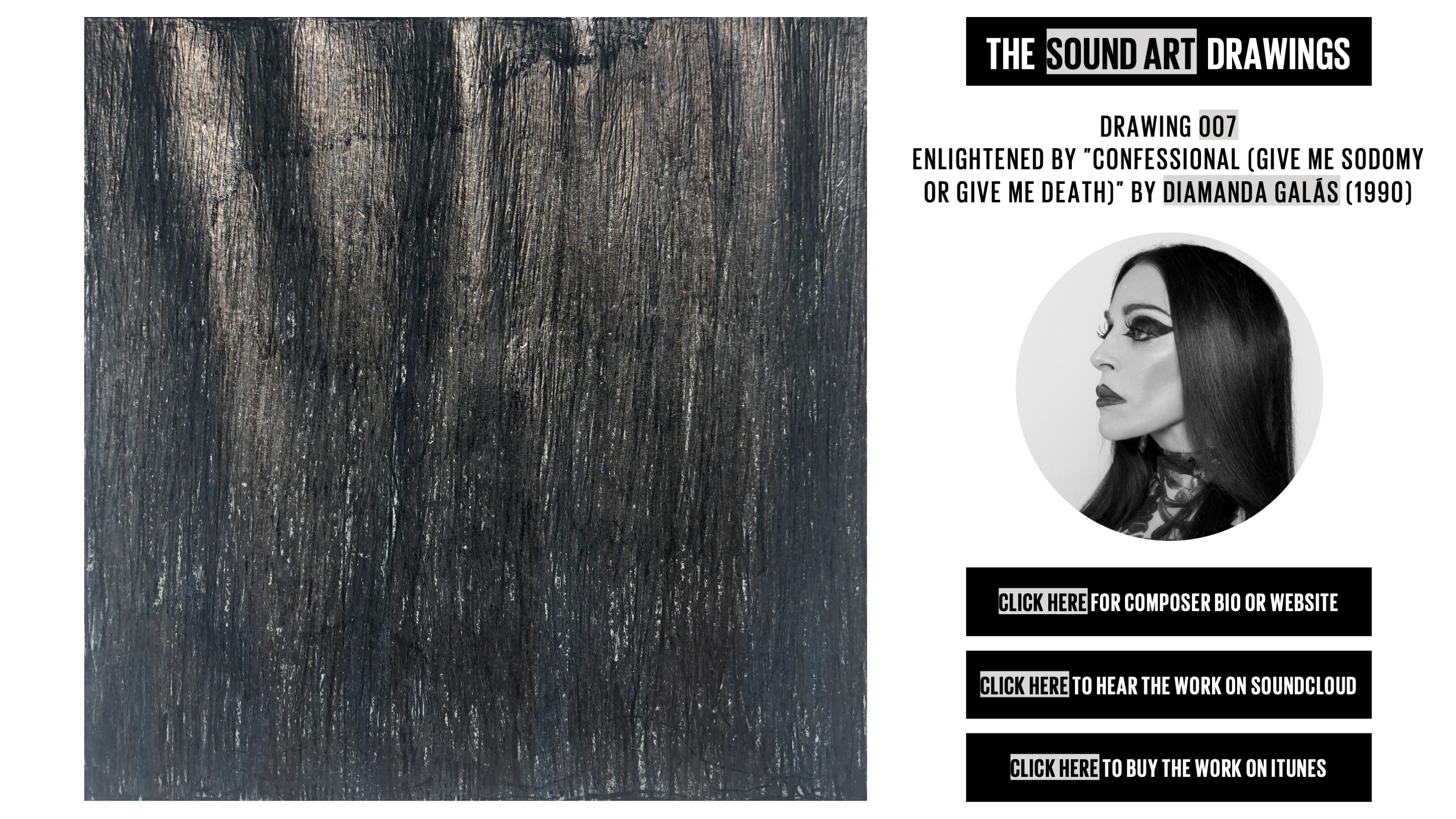
|
The Sound Art Drawings is a new series of monochrome drawings, whereby to achieve each individual drawing, I listened to a loop from a selected piece of music by a queer experimental composer. |
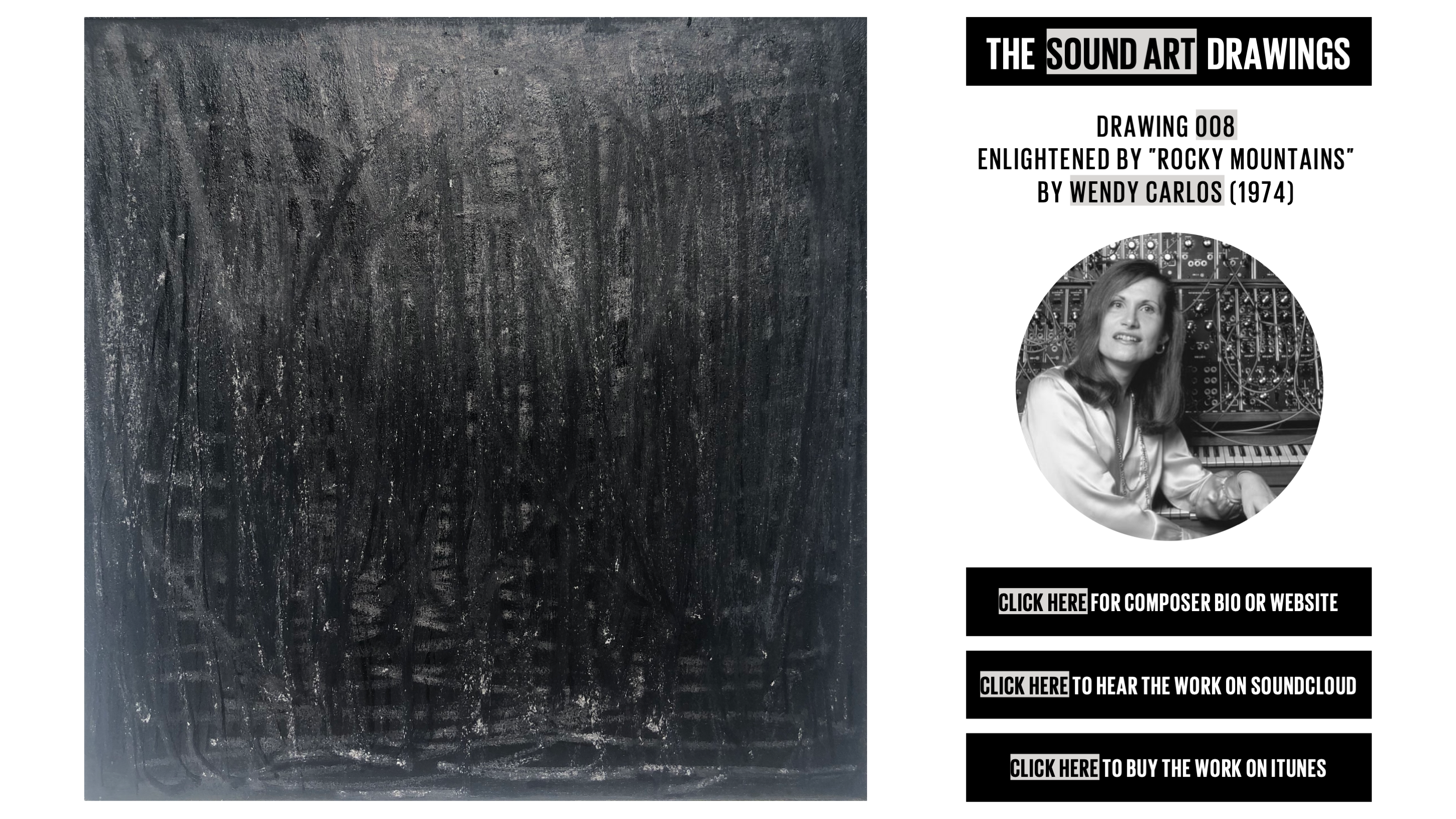
|
The Sound Art Drawings is a new series of monochrome drawings, whereby to achieve each individual drawing, I listened to a loop from a selected piece of music by a queer experimental composer. Drawing 008 from this series is based on the piece, “Rocky Mountains,” which was part of the score for the movie, “The Shining” by Wendy Carlos and Rachel Elkind in 1980. I wanted to utilize Wendy Carlos to offer some quick reflections on the intersections and distinctions amongst the words, “queer” and “composer” and “queer composer.” There are composers on my esteemed list such as Arca or PussyVision who are queer and whose work is often a form of activism amplifying their queerness. There are other composers on my esteemed list such as Muhly or Menzies, who are queer, and make work about queer topics, and who might be more understood for their work on non-queer topics. There are composers on this list such as Cage who are celebrated for his queer personhood, and whose work is completely respected for other reasons outside of his queerness. And then there is Carlos, a pioneering composer, who eventually felt the need to leave her career, because public obsessions about her gender usurped her ability to be engaged in her work, which to her was about something aside from her queerness. With all of this specifically in mind, I must absolutely include Carlos in this series as she fits entirely within the subject criteria; however the quote I’m sharing is not germane to her queerness or very public coming out story, and I invite you to become (re)familiar and invested with her music, precisely and only because it is exceptional. |
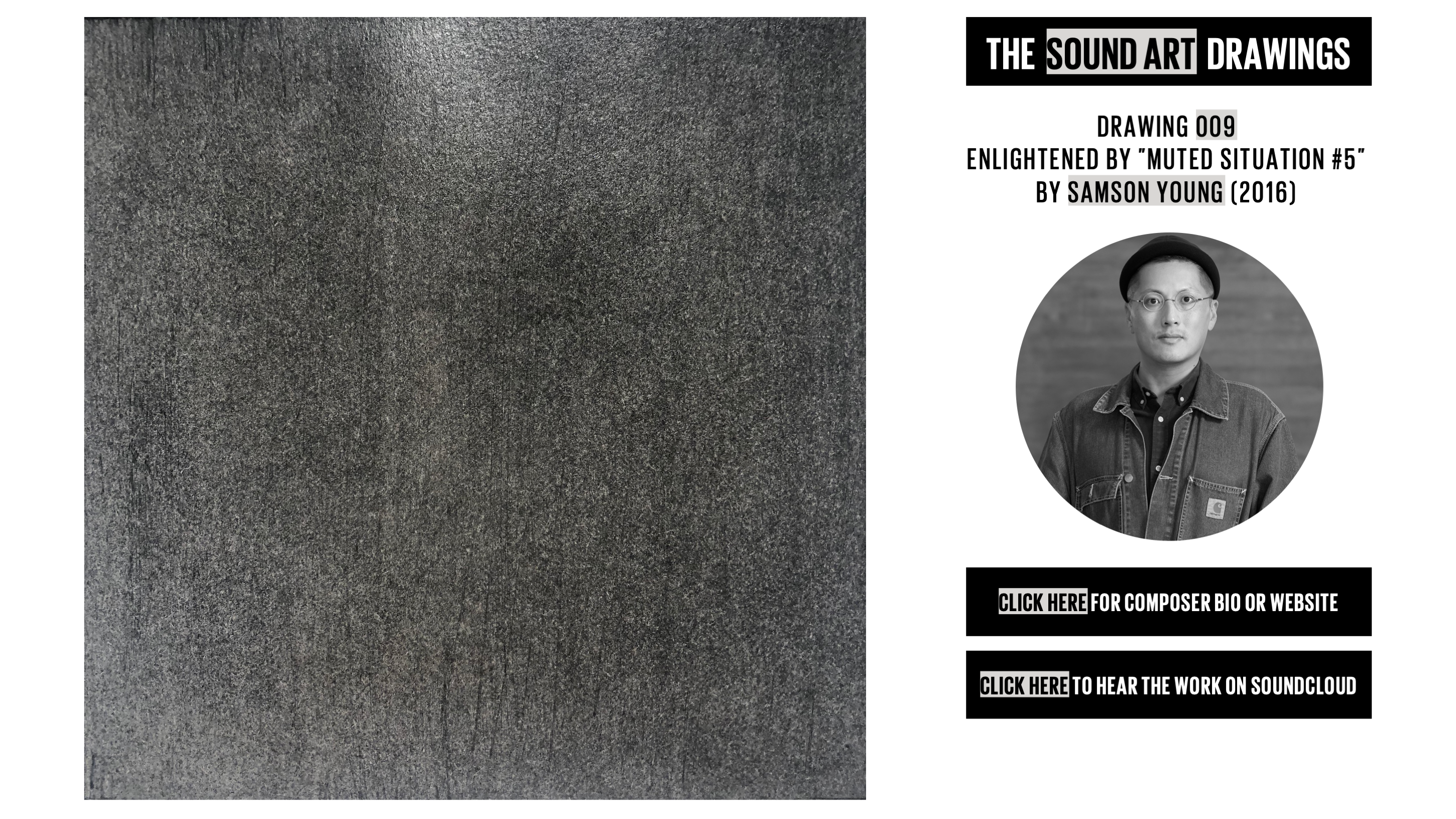
|
| The Sound Art Drawings is a new series of monochrome drawings, whereby to achieve each individual drawing, I listened to a loop from a selected piece of music by a queer experimental composer. Drawing 009 and 010 from this series are based on 2 sound art pieces with correlative processes, “Muted Situation #5 Muted Chorus,” by Samson Young in 2016, and “4’33” by John Cage in 1952. In framing these works, the Cage piece represents a formation of the cannon of compositions with minimalist sound, and the Samson piece could be viewed as a reincarnation of Cage’s process of music. For “4’33”,” Cage assembles in a space the traditional elements that would encompass a musical performance: musicians, instruments, a venue, and an audience. To accomplish the piece, Cage refutes the usage of the instruments and performers, and the timed piece is accomplished via the noises made by the people inhabiting the room. I feel a sense of gestalt by watching these pieces consecutively, which is my same experience when coupling the piano works of Julius Eastman and Nico Muhly, or the electronic music of Wendy Carlos with Pauline Oliveros. I am fascinated by the symmetries and correlating variations in these works which I believe is also quite evident in my drawings. |
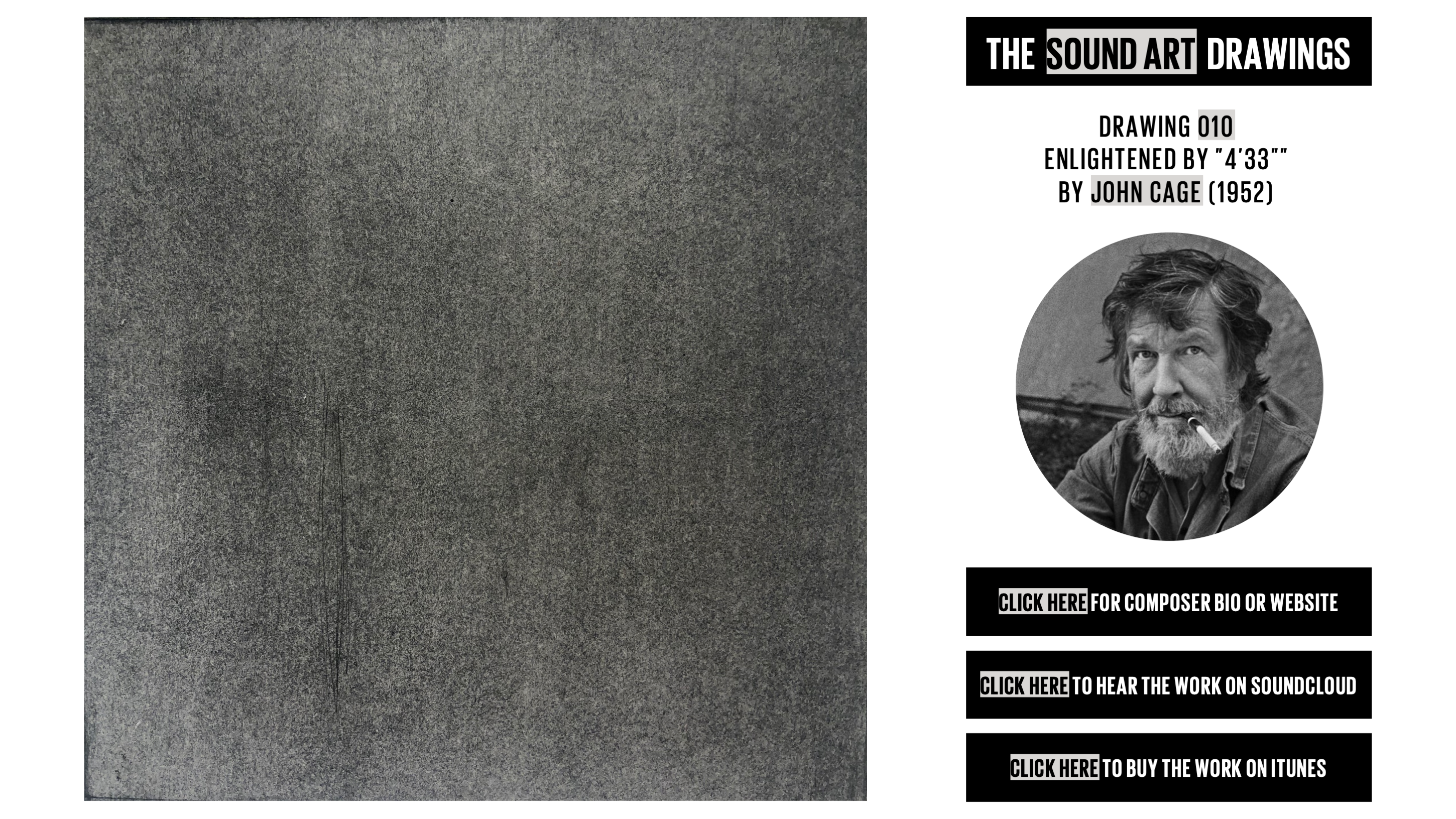
|
| The Sound Art Drawings is a new series of monochrome drawings, whereby to achieve each individual drawing, I listened to a loop from a selected piece of music by a queer experimental composer. Drawings 009 and 010 from this series are based on 2 sound art pieces with correlative processes, “Muted Situation #5 Muted Chorus,” by Samson Young in 2016, and “4’33” by John Cage in 1952. In framing these works, the Cage piece represents a formation of the cannon of compositions with minimalist sound, and the Samson piece could be viewed as a reincarnation of Cage’s process of music. For “4’33”,” Cage assembles in a space the traditional elements that would encompass a musical performance: musicians, instruments, a venue, and an audience. To accomplish the piece, Cage refutes the usage of the instruments and performers, and the timed piece is accomplished via the noises made by the people inhabiting the room. I feel a sense of gestalt by watching these pieces consecutively, which is my same experience when coupling the piano works of Julius Eastman and Nico Muhly, or the electronic music of Wendy Carlos with Pauline Oliveros. I am fascinated by the symmetries and correlating variations in these works which I believe is also quite evident in my drawings. |
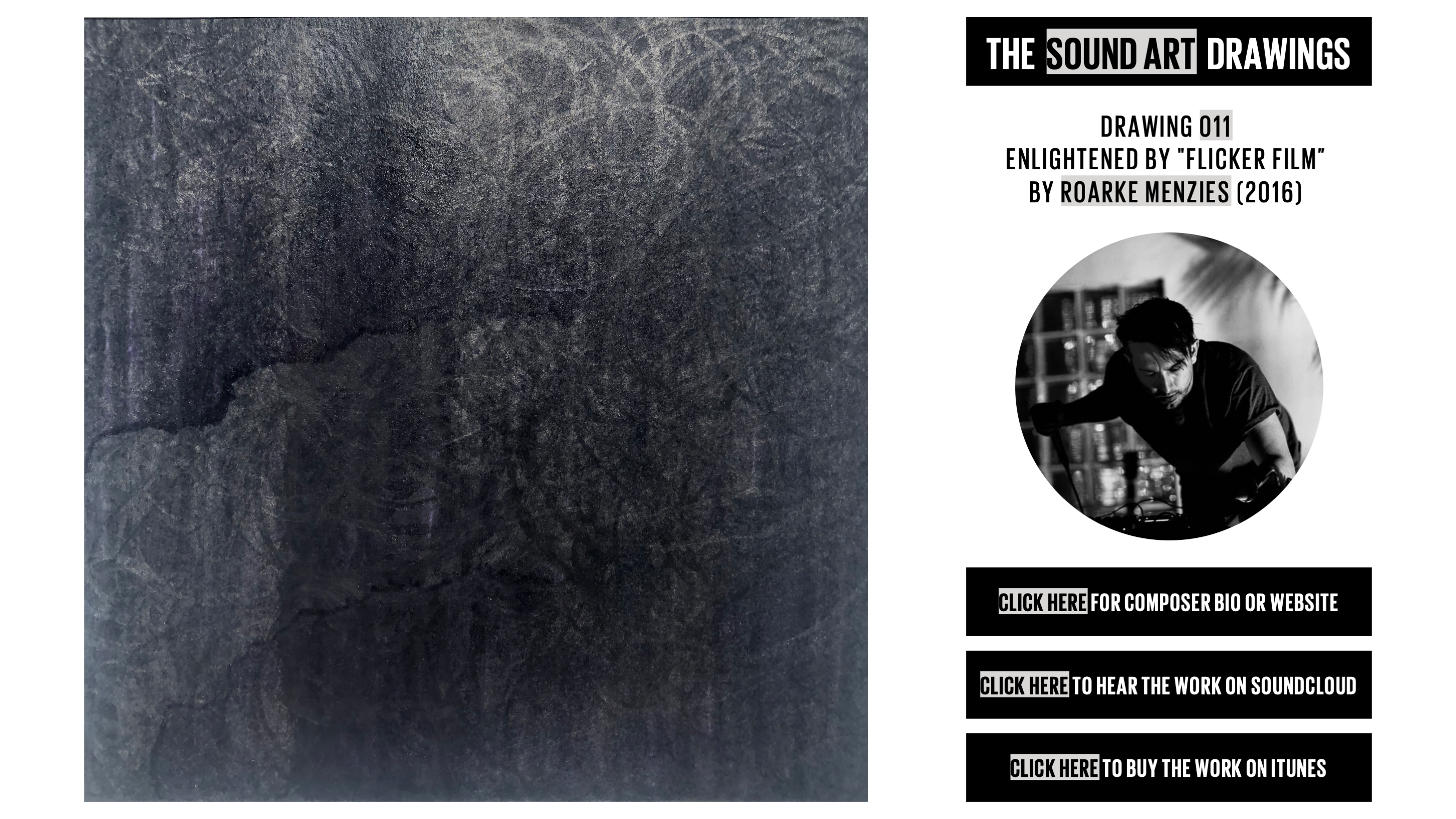
|
| The Sound Art Drawings is a new series of monochrome drawings, whereby to achieve each individual drawing, I listened to a loop from a selected piece of music by a queer experimental composer. Drawing 011 from this series is based on the piece, “Flicker Film,” which was part of the album, “Corporeal” by Roarke Menzies in 2016. “I think of myself as listening together with all the other possible listeners.” – Roarke Menzies |
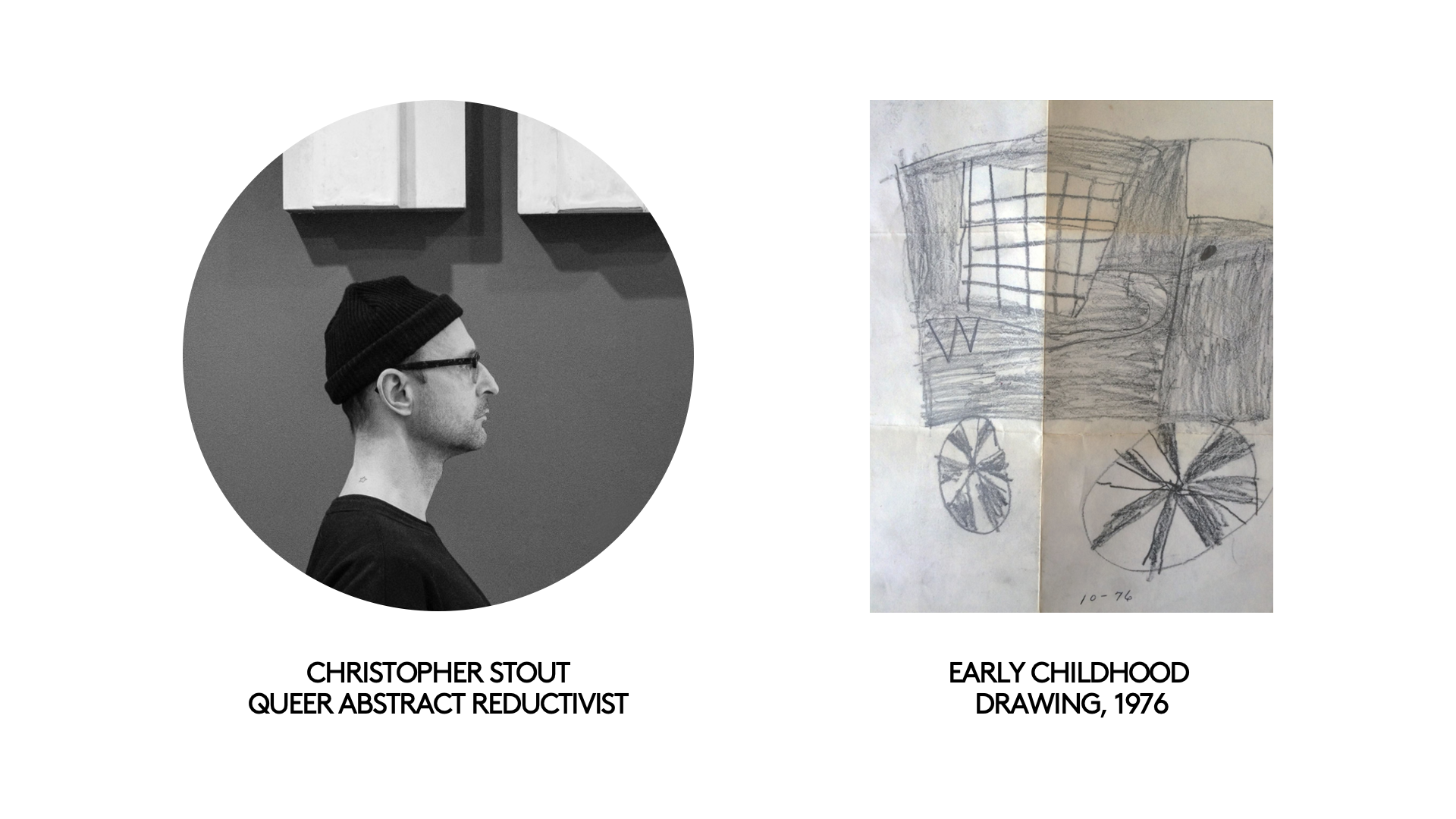 |
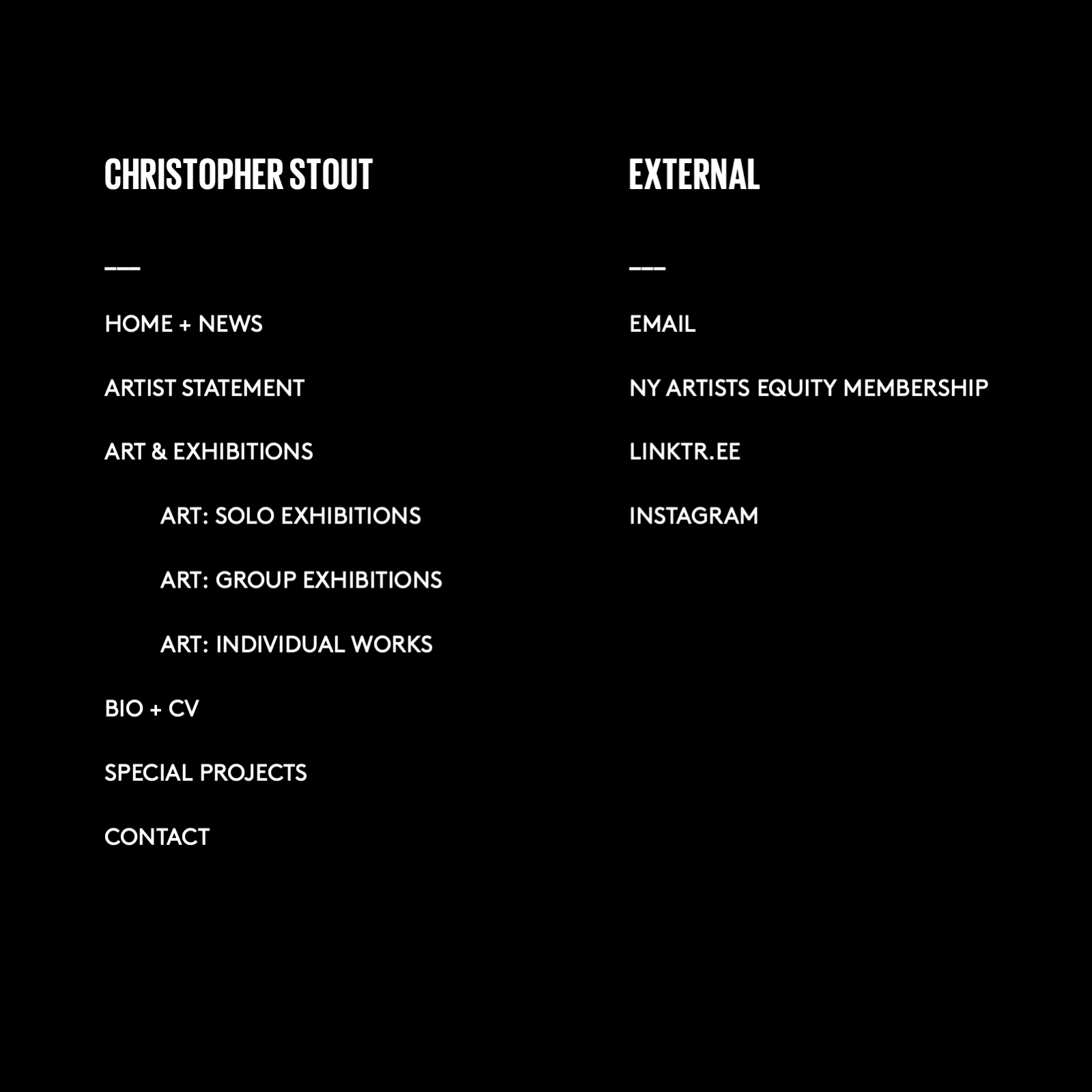
|
 |